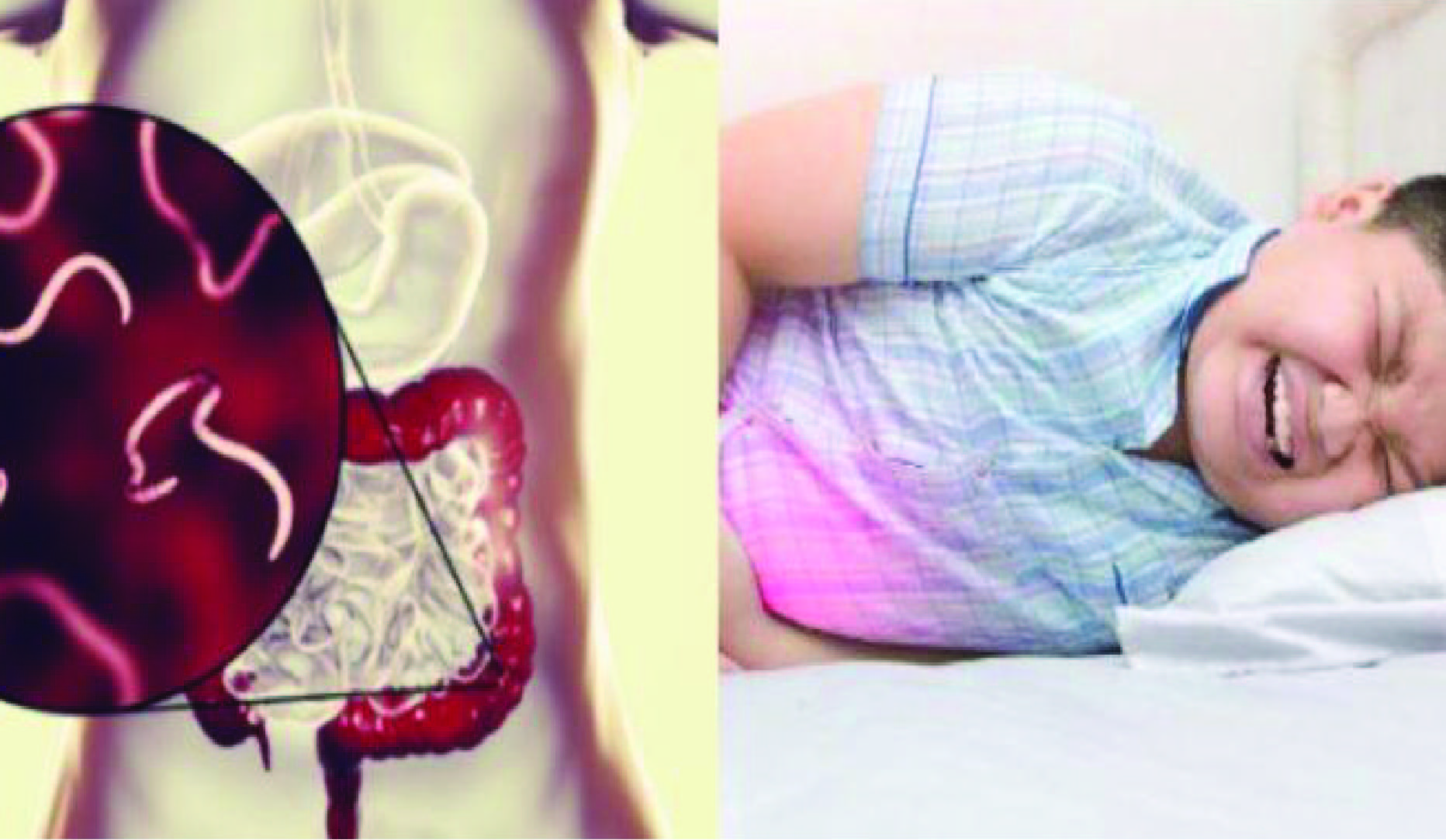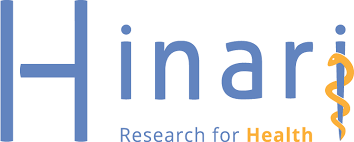RISK FACTORS OF SOIL TRANSMITTED HELMINTHS AMONG ELEMENTARY SCHOOL STUDENTS IN CENTRAL SUMBA – WEST NUSA TENGGARA

Downloads
Background: Soil Transmitted Helminhs (STH) infection is one of health issues in Indonesia. Helmintiasis is a disease commonly found among elementary school. Purpose: To identify risk factor related to the transmission of infection STH in Central Sumba Regency, East Nusa Tenggara Province. Method: The research was done by analytical description based on cross-sectional study. Primary data on risk factors were colleted by which qustionnaire for students fourth to sixth grade, age ranged 8-15 years old. Diagnosis was established using Kato Katz modification method. The data were is analyzed using by cross-sectional of Chi-square test with confidence interval 95% or p-value <0.05 categorized as significant. Result: The proportion of infection in male was 47.1% and in females was 50.9%. The proportion of STH infections was 83.3%, mostly found in fifth grade children (36.6%) and aged 8-11 years (66.6%). The most common type of worm egg infection found in feces was mixed infection of Ascaris lumbricoides and Trichuris trichiura (35.6%), followed by a single infection with T. trichiura (32.8%) and the least number was A. lumbricoides (14. 9%).STH infections have significant related to some risk factors such as defecating not in the latrine, not washing hand with water and soap before eating and after defecated, not practicing hand washing properly, biting nails, sucking fingers, not cutting nails once a week, and barefood. The highest risk factor of STH infection in Central Sumba was defecating not in the latrine (PR=135.500; CI 95% (34.062 - 539.020)). Conclusion: The proportion of STH infections is still quite high due to low personal hygiene and open defecation.
Anjani, I.G.A.D.P., Sudarmaja, I.M., Swastika, I.K., 2019. Hubungan Faktor Risiko dan Prevalensi Infeksi Cacing Usus pada Siswa Sekolah Dasar Negeri Belandingan Kecamatan Kintamani Kabupaten Bangli. E-Jurnal Med. Udayana Vol. 8(10), Pp. 1-5.
Fitri, J., Saam, Z., Hamidy, M.Y., 2012. Analisis Faktor-Faktor Risiko Infeksi Kecacingan Murid Sekolah Dasar di Kecamatan Angkola Timur Kabupaten Tapanuli Selatan Tahun 2012. J. Ilmu Lingkung. Vol. 6(2), Pp. 146-161.
Halleyantoro, R., Riansari, A., Dewi, D.P., 2019. Insidensi dan Analisis Faktor Risiko Infeksi Cacing Tambang pada Siswa Sekolah Dasar Di Grobogan, Jawa Tengah. J. Kedokt. Raflesia Vol. 5(1), Pp. 18-27.
Juhairiyah, J., Indriyati, L., Hairani, B., Fakhrizal, D., 2020. Kontaminasi Telur dan Larva Cacing Usus pada Tanah di Desa Juku Eja Kabupaten Tanah Bumbu. J. Kesehat. Lingkung. Indones. Vol. 19(2), Pp. 127-132.
Kamila, A.D., Margawati, A., Nuryanto, N., 2018. Hubungan Kecacingan dengan Status Gizi dan Prestasi Belajar pada Anak Sekolah Dasar Kelas IV dan V di Kelurahan Bandarharjo Semarang. J. Nutr. Coll. Vol. 7(2), Pp. 77-83.
Khan, M., Ishaq, M., 2018. Knowledge, Attitude and Practices Regarding Infection Control among Healthcare Professional at Saidu Teaching Hospital (STH), Swat, Khyber Pukhtoon Khwa, Pakistan, 2015. Internatinal J. Infect. Dis. Vol. 73(26), Pp. 393-398.
Krishnandita, M., Swastika, I.K., Sudarmaja, I.M., 2019. Prevalensi dan Tingkat Pengetahuan Mengenai Infeksi Soil Transmitted Helminth pada Siswa SDN 4 Sulangai, Kabupaten Badung , Bali. Med. Udayana Vol. 8(6), Pp. 1-10.
Mau, F., Mulatsih, 2017. Prevalensi and Intensitas of Soil -Transmitted Helminth Infection among Elementary School Students in West Sumba and Central Sumba Districts Eas Nusa Tenggara, Indonesia. Jounal Med. Siense Clin. Res. Vol. 5(10), Pp. 28988-28994.
Paun, R., Olin, W., Tola, Z., 2019. The Impact of Soil Transmitted Helminth ( STH) Towards Anemia Case in Elementary School Student in the District of Northwest Sumba. Glob. J. Health Sci. Vol. 11(5), Pp. 117-122.
Permatasari, Z., 2020. Prevalensi dan Faktor Risiko Kecacingan pada Anak Sekolah Dasar di Pemukiman Kumuh di Kecamatan Tallo Kota Makassar. Universitas Hasanuddin.
Prabandari, A.S., Ariwart, V.D., Pradistya, R., Sari, M.M.S., 2020. Prevalensi Soil Transmitted Helminthiasis pada Siswa Sekolah Dasar di Kota Semarang. Avicenna J. Heal. Res. Vol. 3(1), Pp. 1-10.
Prasetyo, H.N., Prasetyo, H., 2018. Prevalence of Intestinal Helminthiasis in Children at North Keputran Surabaya at 2017. J. Vocat. Heal. Stud. Vol. 1(3), Pp. 117-120.
Rahma, N.A., Zanaria, T.M., Nurjannah, N., Husna, F., Putra, T.R.I., 2020. Faktor Risiko Terjadinya Kecacingan pada Anak Usia Sekolah Dasar. J. Kesehat. Masy. Indones. Vol. 15(2), Pp. 29-33.
Regulation of the Minister of Health, 2016. Peraturan Menteri Kesehatan tentang Pedoman Penyelenggaraan Program Indonesia Sehat dengan Pendekatan Keluarga. 39.
Regulation of the Minister of Health, 2017. PERMENKES No. 15 Tahun 2017 tentang Pananggulangan Cacingan. 15.
Rahmawati, R., Soeyoko, S., Sumarni, S., 2014. Hygiene ,Sanitation and The Soil Transmitted Helminths (STH) Infection among Elementary School Students in. J. Med. Scirence Vol. 46(2), Pp. 94-101.
Ruba, Y.E., Joko, T., Budiyono, B., 2021. Faktor Pendukung dan Penghambat Program Stop Buang Air Besar Sembarangan (BABS) di Wilayah Kerja Puskesmas. J. Ris. Kesehat. Masy. Vol. 1(2), Pp. 1-11.
Sastrawan, I.G.G., Setiabudi, J., Sanjiwani, N.P., Indriyani, N.K., Laksemi, D.A., 2020. Risk Factors of Soil Transmitted Helminth Infection among Primary School Students. Heal. Sci. J. Indones. Vol 11(2), Pp. 126-132.
Setyowatiningsih, L., Budianto, B.H., Samsi, M., 2020. Faktor Risiko Infeksi Soil Transmitted Helminth pada Perajin Batu Bata di Provinsi Jawa Tengah. Maj. Ilm. Biol. Biosf. A Sci. J. Vol. 37(3), Pp. 126-134.
Sihombing, C.D.M., 2021. Hubungan Infeksi Soil-Transmitted Helminths dengan Perkembangan Kognitif pada Anak Usia Sekolah Dasar: Telaah Sistematis Skripsi. Universitas Sumatera Utara.
Suharmiati, S., Rochmansyah, R., 2018. Mengungkap Kejadian Infeksi Kecacingan pada Anak Sekolah Dasar (Studi Etnografi di Desa Taramanu Kabupaten Sumba Barat). Bul. Penelit. Sist. Kesehat. Vol. 21(3), Pp. 212–218.
Suryan, V., Lubis, M., Sukatendel, K., 2016. Hubungan Infeksi Soil Transmitted Helminths dengan Status Gizi Anak Usia Sekolah Dasar di SDN 101747 Kelurahan Klumpang Kebun Kecamatan Hamparan Perak Kabupaten Deli Serdang. Universitas Sumatera Utara.
Suryantari, S.A.A., 2019. Prevalence, Intensity and Risk Factor of Soil Transmitted Helminths Infections Among Elementary School Students in Ngos Village, Karangasem District, Bali,. Indones. J. Top. Infekstious Dis. Vol. 7(6), Pp. 137–143.
Unud, H.F., 2021. Worm Infection in Children: Bagaimana Pengaruh Kecacingan terhadap Anak. Artik. Kesehat. Ed. Juni 2021. URL https://hmkm.fkunud.com/worm-infections-in-children-bagaimana-pengaruh-kecacingan-terhadap-kesehatan-anak/ (accessed 3.3.22).
WHO, 2023. Soil-Transmitted Helminth Infections. World Heal. Organ. URL https://www.who.int/news-room/fact-sheets/detail/soil-transmitted-helminth-infections#:~:text=Transmission,these eggs contaminate the soil (accessed 1.20.23).
Copyright (c) 2023 Journal of Vocational Health Studies

This work is licensed under a Creative Commons Attribution-NonCommercial-ShareAlike 4.0 International License.
- The authors agree to transfer the transfer copyright of the article to the Journal of Vocational Health Studies (JVHS) effective if and when the paper is accepted for publication.
- Legal formal aspect of journal publication accessibility refers to Creative Commons Attribution-NonCommercial-ShareAlike (CC BY-NC-SA), implies that publication can be used for non-commercial purposes in its original form.
- Every publications (printed/electronic) are open access for educational purposes, research, and library. Other that the aims mentioned above, editorial board is not responsible for copyright violation.
Journal of Vocational Health Studies is licensed under a Creative Commons Attribution-NonCommercial-ShareAlike 4.0 International License














































